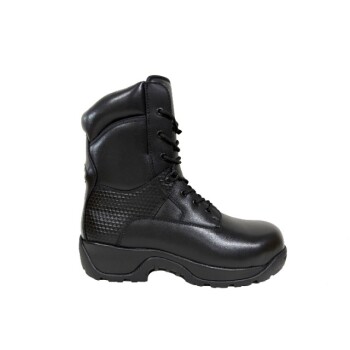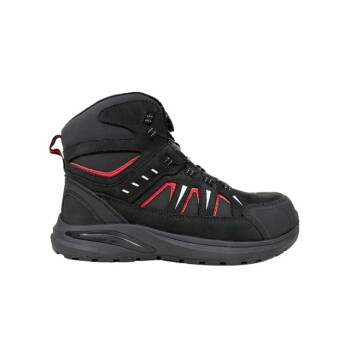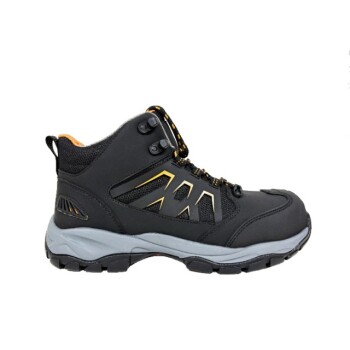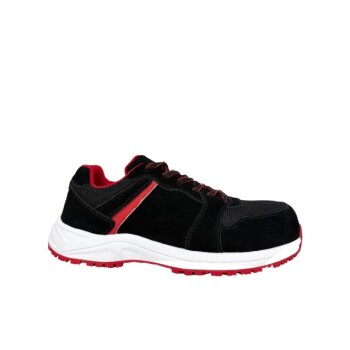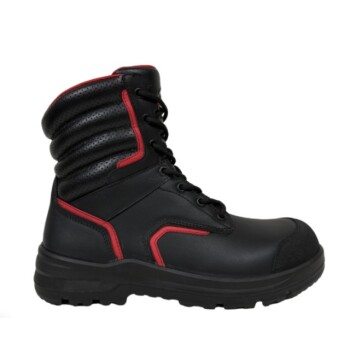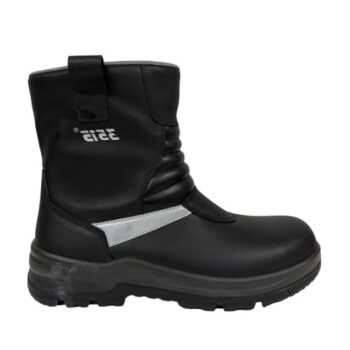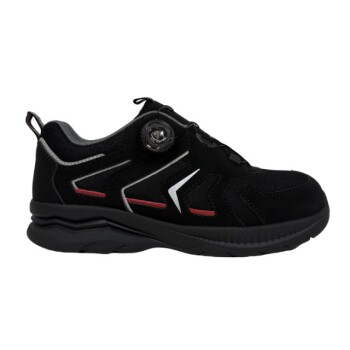The fundamental difference is the presence or absence of a protective, reinforced cap over the toes. A soft toe boot or shoe has no reinforcement and offers no protection from impact or compression. A safety toe is a broad category of footwear that includes a built-in protective cap made from materials like steel, composite, or alloy, which is certified to meet specific safety standards.
The choice isn't simply between "safety" and "no safety." It's about understanding the specific type of environment you'll be in. Soft toe is for low-risk settings, while the "safety toe" category offers different materials to balance protection, weight, and environmental needs.
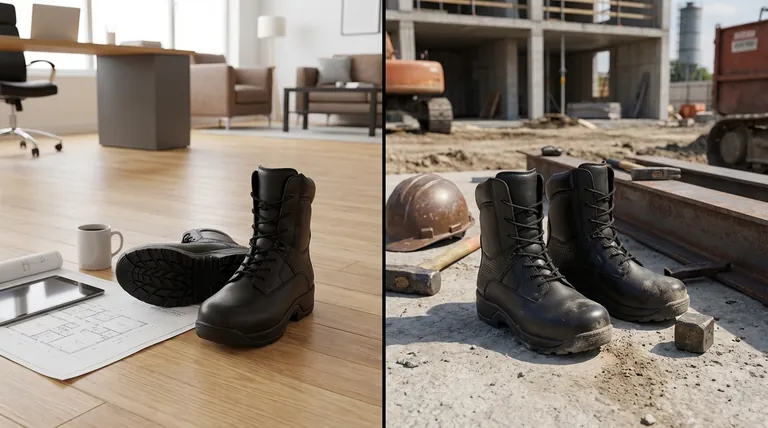
What Defines a Soft Toe?
No Protective Cap
A soft toe boot is constructed like any standard piece of footwear. The area over the toes is made from the same materials as the rest of the boot, such as leather, canvas, or synthetic fabric.
The Focus is Comfort and Flexibility
Without a rigid cap, soft toe boots are generally lighter, more flexible, and require less break-in time. Their primary purpose is to provide support and comfort in environments where toe injuries from falling objects or compression are not a risk.
When to Choose a Soft Toe
Soft toe footwear is ideal for office work, light-duty jobs with no impact hazards, or general casual wear. They provide the look of a work boot without the added weight and rigidity of a safety toe.
Deconstructing the "Safety Toe" Category
An Umbrella Term for Protection
"Safety toe" is not a single type of boot. It is an umbrella term for any footwear that has a reinforced toe cap designed to meet official safety standards set by organizations like the ASTM (American Society for Testing and Materials).
These caps protect your feet from impact and compression forces.
Steel Toes: The Traditional Standard
Steel toes are the original and most common type of safety toe. They incorporate a heavy-duty steel cap that provides maximum protection against impact and crushing forces.
They have been the go-to choice for heavy industrial and construction work for decades.
Composite Toes: The Modern, Non-Metal Alternative
Composite toes are made from non-metallic materials like carbon fiber, plastic, fiberglass, or Kevlar. They provide ASTM-certified protection but are significantly lighter than steel.
Because they contain no metal, they do not conduct electricity, heat, or cold, making them ideal for electricians or those working in extreme temperatures.
Alloy Toes: Lightweight Metal Protection
Alloy toes, typically made from materials like aluminum or titanium, offer another lightweight option. They can be made thinner than steel caps while providing similar impact resistance.
This results in a protective boot that is lighter than steel but still meets the same safety standards.
Understanding the Key Trade-offs
Protection vs. Comfort
This is the most direct trade-off. Soft toe footwear offers maximum flexibility and immediate comfort but zero protection from job site hazards. All safety toes add rigidity in exchange for critical, certified protection.
Weight and Fatigue
A key difference among safety toes is weight. Steel is the heaviest, which can lead to greater fatigue over a long workday. Composite and alloy toes provide certified protection at a much lower weight.
Environmental Factors
The material of the safety toe matters. Steel conducts temperature and electricity. If you work in extreme cold or heat, or around live electrical hazards, a composite toe is a much safer and more comfortable choice.
Making the Right Choice for Your Needs
Choosing the right footwear requires matching the boot's features to your environment's specific risks.
- If your primary focus is office work or light-duty tasks with no impact risk: A soft toe boot offers the best comfort and flexibility.
- If your primary focus is maximum protection in heavy construction or industrial settings: A steel toe remains the traditional standard for its strength.
- If your primary focus is protection in a job with electrical hazards or extreme temperatures: A non-conductive composite toe is the safest and most appropriate choice.
- If your primary focus is balancing certified protection with minimizing weight and fatigue: An alloy toe or composite toe provides an excellent modern alternative.
Ultimately, selecting the correct footwear is a critical decision for your personal safety and daily comfort.
Summary Table:
| Feature | Soft Toe | Steel Toe | Composite Toe | Alloy Toe |
|---|---|---|---|---|
| Protection | None | Maximum Impact/Crush | ASTM-Certified Impact/Crush | ASTM-Certified Impact/Crush |
| Weight | Lightest | Heaviest | Lighter than Steel | Lighter than Steel |
| Key Characteristic | Comfort & Flexibility | Traditional Maximum Protection | Non-Metallic, Non-Conductive | Lightweight Metal |
| Ideal For | Office, Casual Wear | Heavy Industry, Construction | Electrical Work, Extreme Temperatures | Lightweight Protection Needs |
Need High-Quality Safety Footwear for Your Team?
As a large-scale manufacturer, 3515 produces a comprehensive range of certified safety footwear for distributors, brand owners, and bulk clients. Whether you need durable steel toes for construction or lightweight composite toes for utilities, our production capabilities encompass all types of safety shoes and boots to meet your exact specifications and safety standards.
Contact our experts today for competitive pricing and custom solutions to protect your workforce.
Visual Guide

Related Products
- Premium Grain Leather Safety Boots for Bulk Supply
- Heavy Duty Nubuck Safety Boots Safety Shoes for Global Distribution
- Premium Sport Style Safety Boots for Bulk Orders
- Premium Suede Sport Safety Shoes for Wholesale & Bulk Orders
- Wholesale Safety Footwear Manufacturer for Bulk & Custom OEM Orders
People Also Ask
- Is safety toe better than steel toe? A Guide to Choosing the Right Protection
- What boots do they wear on oil rigs? Essential Safety Footwear for Harsh Conditions
- Do moc toe boots have steel toe? Get Durable, Safety-Compliant Footwear
- What does OSHA say about steel toe boots? A Guide to Compliant Footwear
- What is the OSHA standard for safety-toe boots? Ensuring Compliance and Worker Protection
